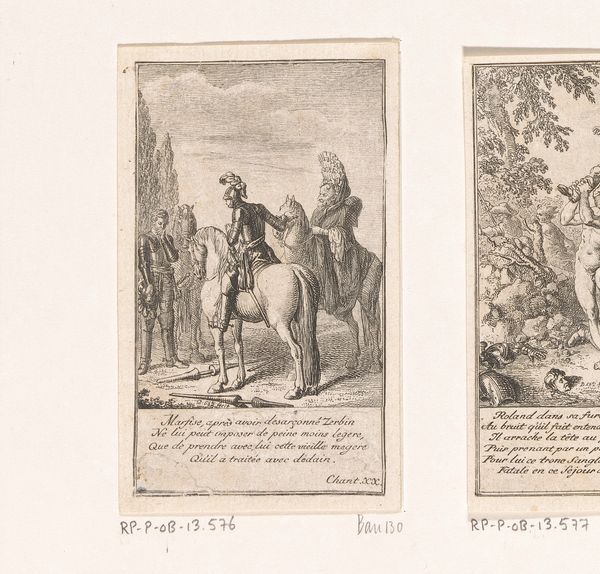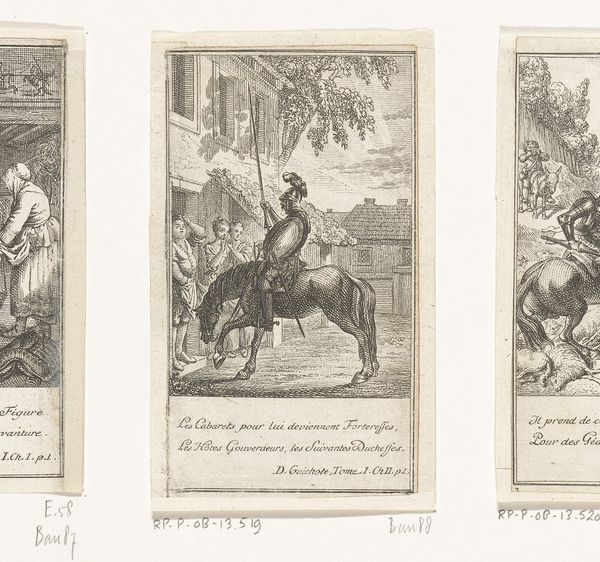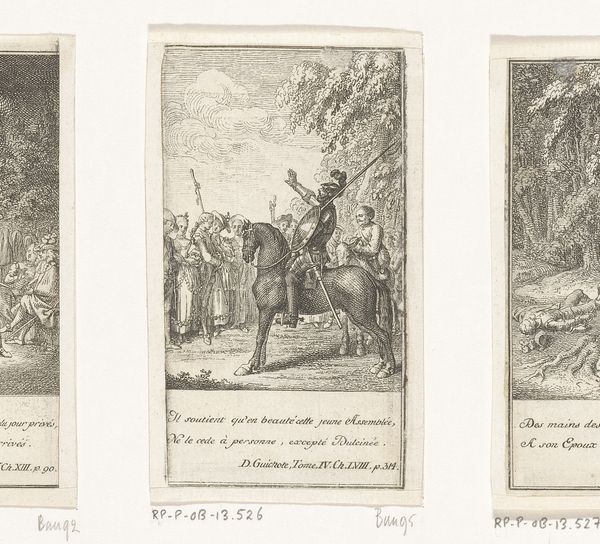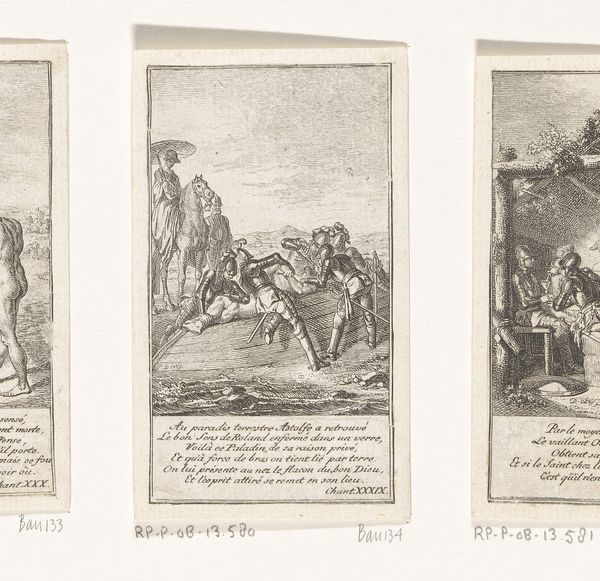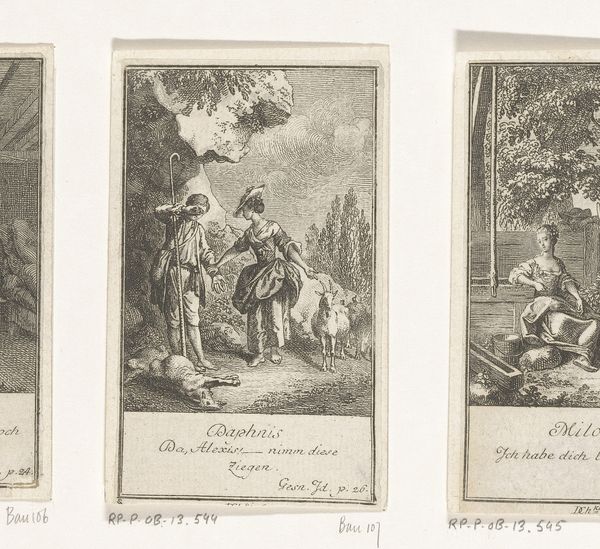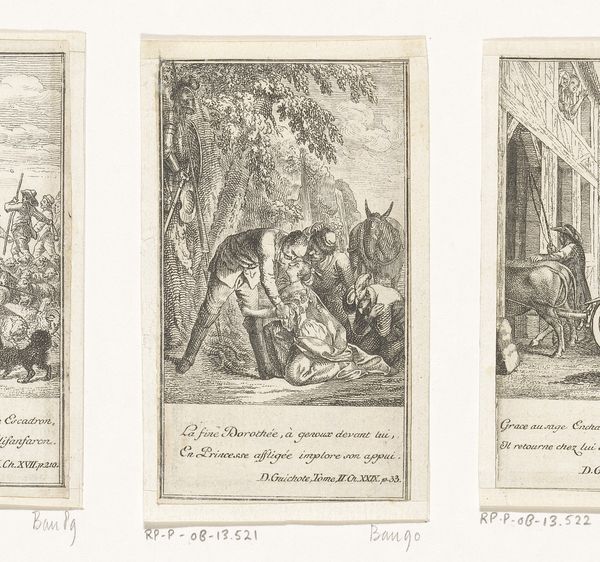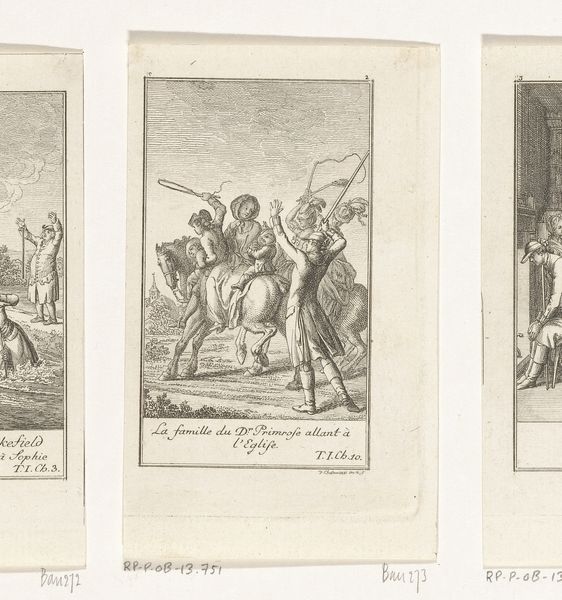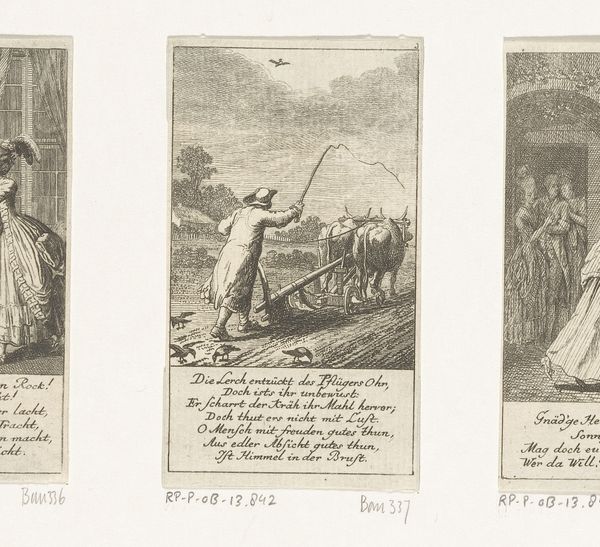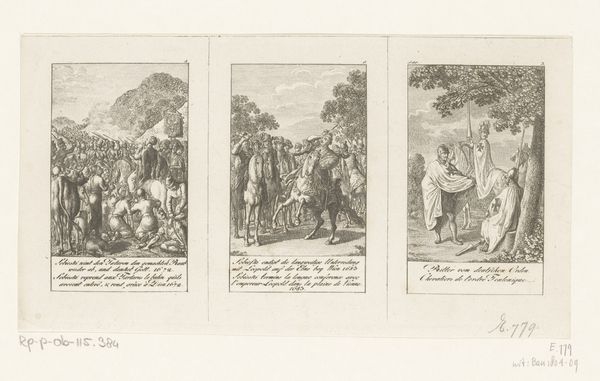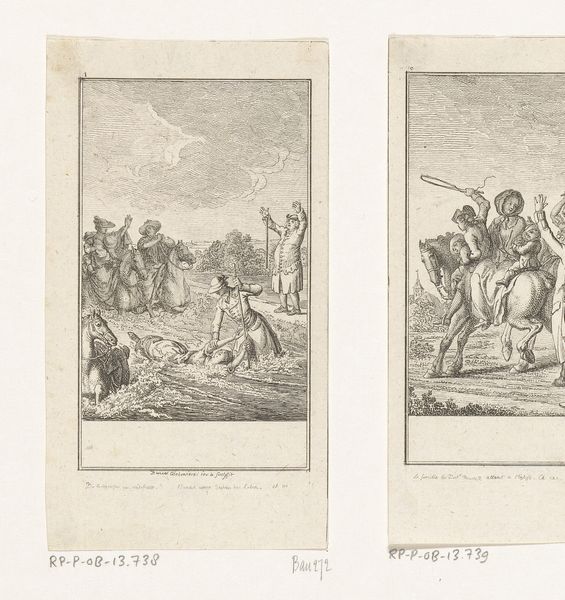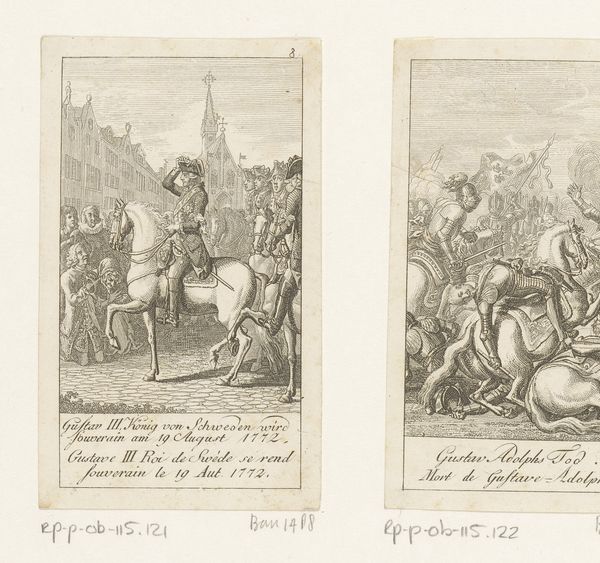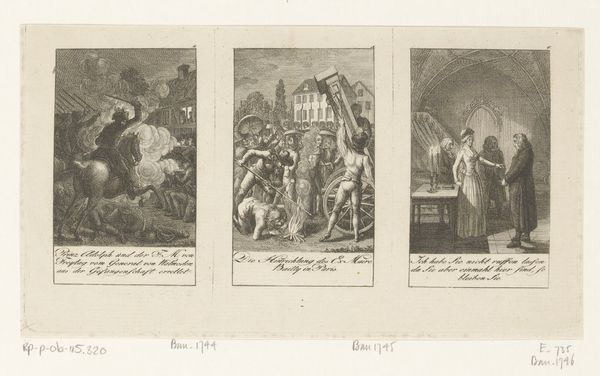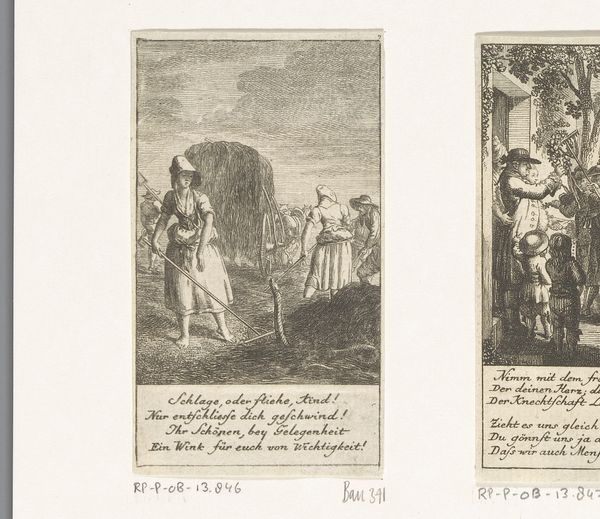
Dimensions: height 95 mm, width 57 mm
Copyright: Rijks Museum: Open Domain
Editor: Here we have Daniel Nikolaus Chodowiecki's "Don Quichot valt een kudde schapen aan," from 1770. It’s an engraving, etching and print held at the Rijksmuseum. I'm struck by the frantic energy and the sheer amount of detail packed into such a small space. What stands out to you about this piece? Curator: As a materialist, I’m drawn to the process of creating this print. Consider the labor involved in producing the etching. Each line, each shadow, meticulously etched onto the plate. How does the very act of reproducing Cervantes’ story through this medium, and for a growing consumer market, change our understanding of the narrative? Editor: That's a great point! The print medium would have made it much more accessible than, say, a painting. Curator: Exactly! Think about the social context. Prints like these democratized art and literature. Who was consuming these images, and how did their consumption patterns affect the art being produced? Were they more interested in a certain narrative? And in which ways is this material reality and production technique informing the artwork? Editor: So you're suggesting that the choice of printmaking, with its inherent reproducibility, directly influenced the themes and the reach of the story itself? The "means of production," so to speak, are as important as the content? Curator: Precisely! The image becomes less about pure artistic genius and more about the confluence of material availability, production techniques, and the desires of a consuming public. Look at the crisp lines achievable via etching, notice the lack of color. It’s designed for relatively quick production and wide distribution. Editor: I never thought about it that way, but now I see how the materiality and social context are inseparable from the artwork’s meaning. It's about so much more than just the image itself. Curator: Indeed. Examining the print's production shines a light on the culture of the time.
Comments
No comments
Be the first to comment and join the conversation on the ultimate creative platform.
